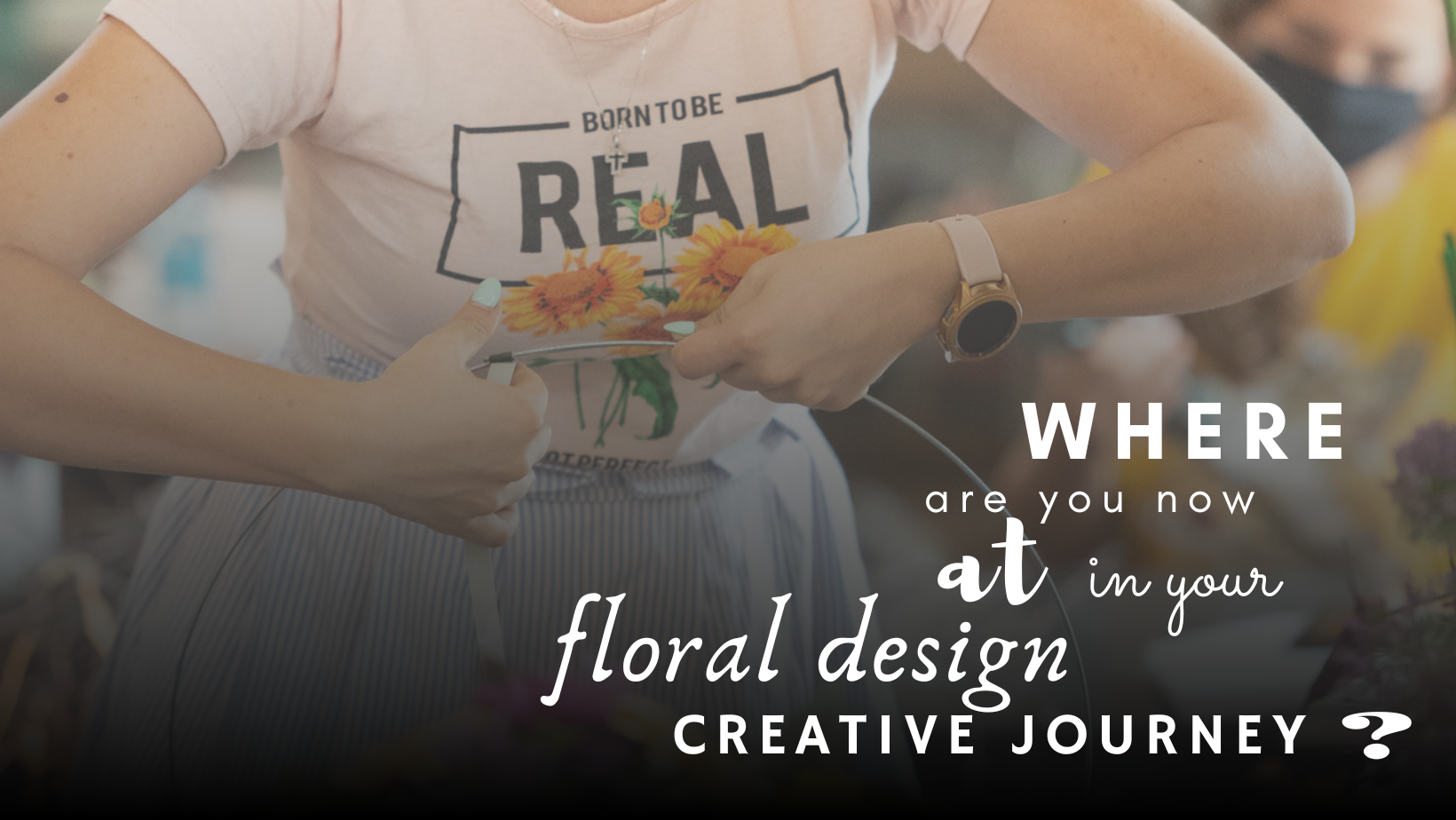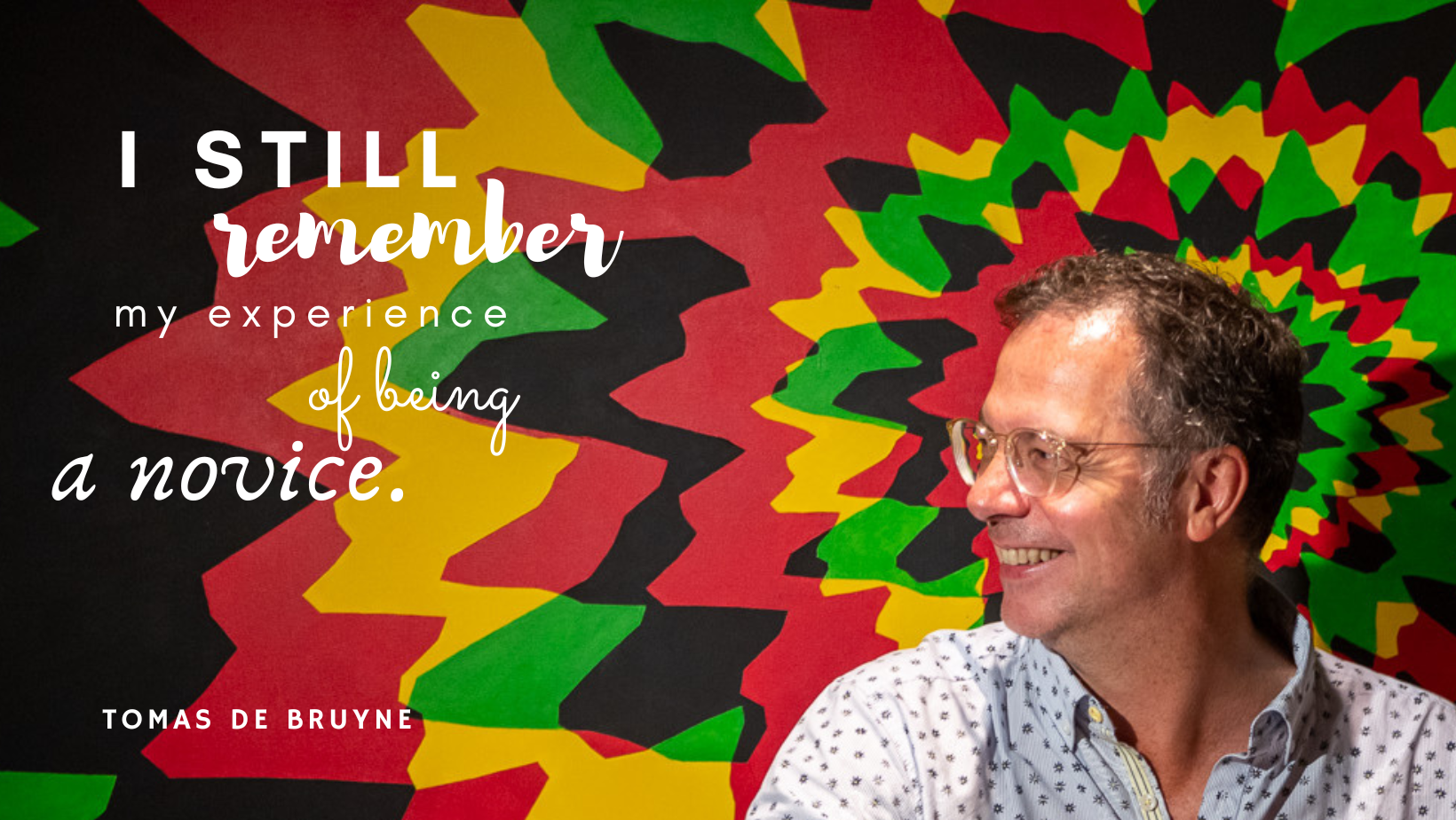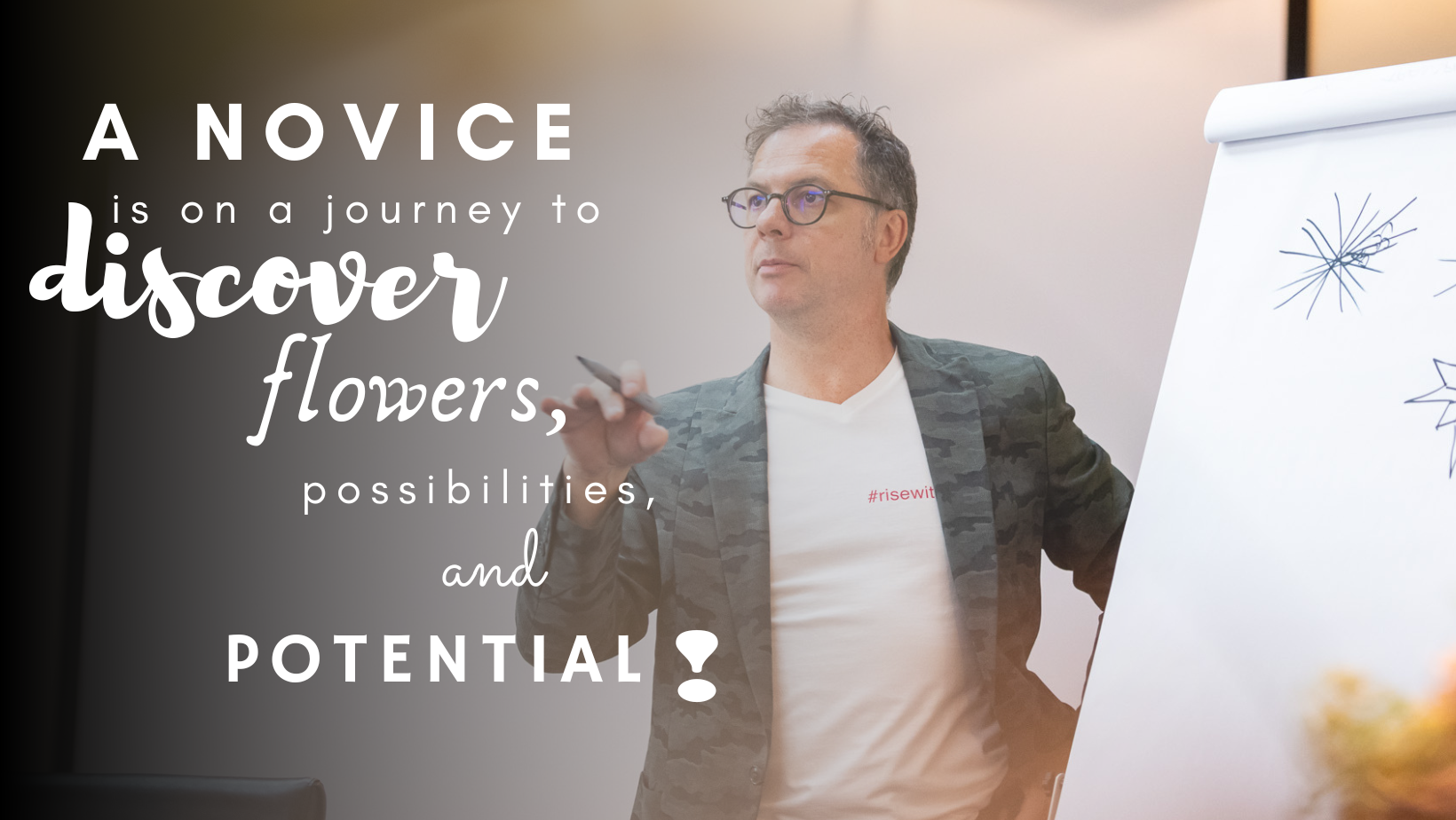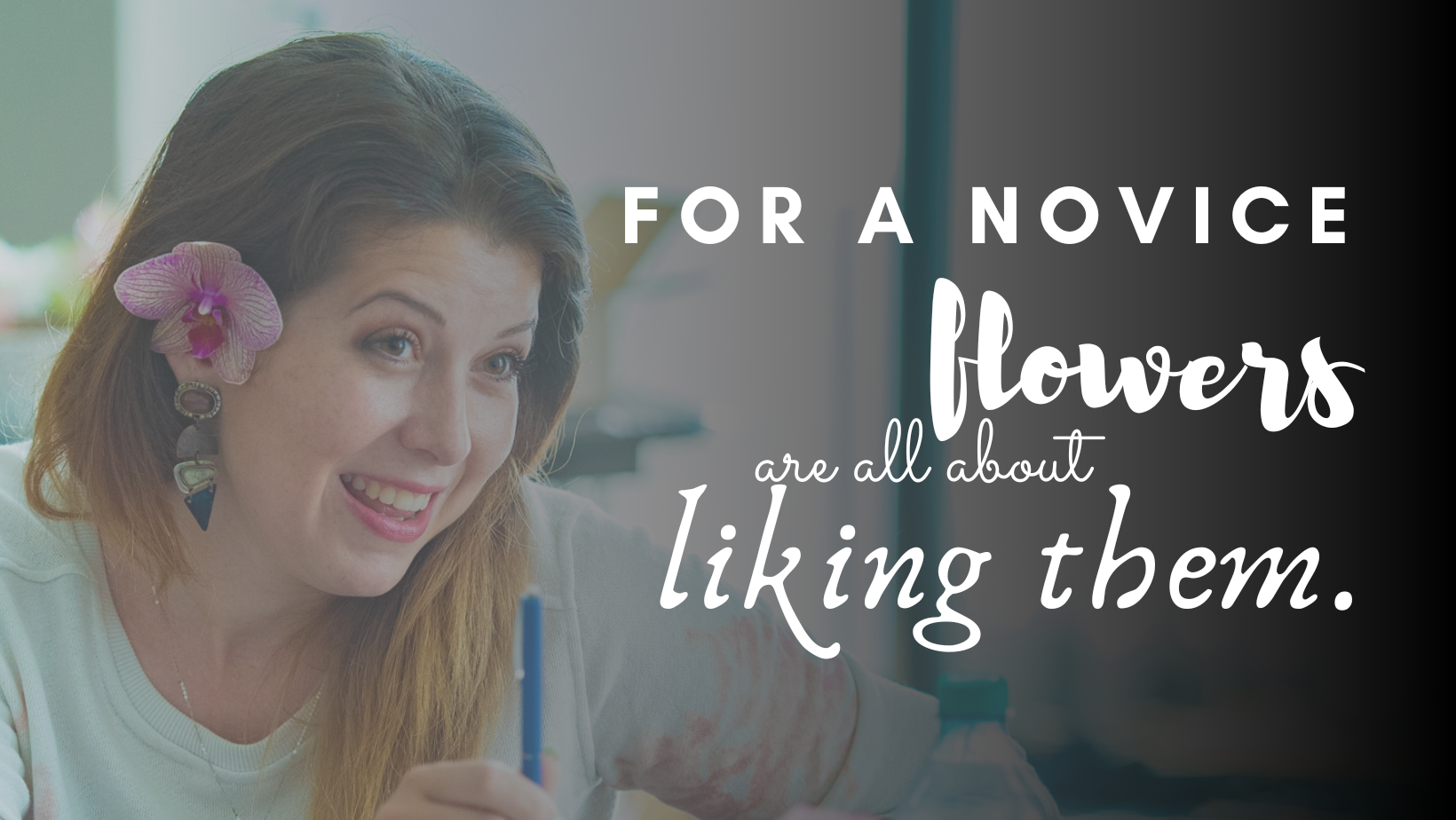Let's talk about the Novice Designer
Jul 05, 2022The Exciting Stage of New Beginnings
With Tomas De Bruyne, Lead Instructor at EMC
We all go through a certain stage, but where are we and why is this so important? You need to know where you are now, so that, maybe, you can progress to the next step. If you want to grow, you must know where your starting position is.
The NOVICE is but the first stage of the five different levels. I know there are really more than five stages but as I have mention in the introductory lecture, it's all about the tints and shades of grey. We will keep it as simple as possible by concentrating on the five main stages, the most relevant in terms of creative growth.
The novice designer can also be called 'the level of the untapped knowing'. Everything is new and you can ask yourselves, how do I, Tomas, talk about all that information, how do I know all this?
Well, let me assure you, I was there, too! All of us have been through that stage, as there is no journey without a beginning, there is no experience if that initial boost of energy that only a new start can give you doesn't exist.

I was there! I will talk about my own experiences and what I am going to tell you is about having gone through those five stages myself. Believe me, I made all mistakes at each stage, I've been through failures, but also successes. I went through difficulties, but also, I had some victories and I have to say I had my ups and downs. I made some wrong decisions. Believe me, I really said, ‘Oh my God, why did I do that? That is so wrong!’. I can also tell you that I did make great decisions. What I'm going to tell you is, from my own perspective, and from the perspective when I travel around the world, that I talk with people, and I talk with my students, and I absorb all this information. This is what I wanted to share with you. I still remember my experience of being a novice.
I am going to tell you a small story. I met a girl, and I was so in love with her! I asked her if there was a chance that I could spend more time with her. She said, ‘Well, my parents have a flower shop. You must ask my dad because I have to work in my parents’ flower shop’. I did. I went to her dad, and I said, ‘Hello, I am Tomas. I know your daughter and you know what, I want to be with her'. His approval came with a condition: that I actually spend time with his daughter during her working hours as well, in the flower shop, also helping with the work that was needed. So, I did this as a pure novice designer, - well not a designer just a novice! I swept floors, I cleaned flowers, and I was a real novice, not a designer, but a novice in the full meaning of the way that I touched the flowers. I cleaned thousands and thousands of stems, so every stem I had in my hand, I looked at the flower, I looked at the color combination, and I was really intrigued by that. And from that moment, I felt a certain connection with flowers. I certainly felt I had a connection with that kind of medium.

Then one day her dad came to me and said, 'You know, I do think you have a talent to design, you know. Just make something.' I said, ‘yeah, why not?’ I started to make something from my own experience. I have to say I was living in my own personal bubble. I was designing a little bit the way I liked, with the colours I preferred. I was reaching out to the flowers that were appealing to me. It was more about me. This was not being selfish, but I was on a journey of discovery, to discover the flowers, the possibilities, and the potential. Potential is a big word, and we haven’t used that word before, because at this level, we don't know what potential is.
At this stage, we just see what we see, because the keyword of a novice designer is 'WHAT'.
What I see is what I get.
What is the design?
What is a flower?
I have to use that flower. Why? Because it's a nice flower, but we don't go deeper than that as most novice designers do not ask themselves that question: why?
We just make it a little bit our own because we like it. At this level, we don't think about the W's for our clients. We just think ‘it's for me’. ... for what I like. It's a design, so we don't need to go too deep. We don't dive into the matter of designing. That is typical for a novice designer. They are all in an experimental phase and feel it is a game to deconstruct and construct, and that is one way of working.
 Sometimes I see this with students. They start, and they deconstruct, and they construct again. They are in a process of building something, but they don't know what the outcome will be. That's cool. I can say, you know what, let's skip that process but, please, do NOT skip that process, because it is part of the growing process. It is part of getting better, but also for you to know who you are, what you do, and, as a novice, do you like what you are doing? Do you love working with flowers? Do you love to design? That's a big question. That novice stage, that novice level, it is so important for you to go through that process.
Sometimes I see this with students. They start, and they deconstruct, and they construct again. They are in a process of building something, but they don't know what the outcome will be. That's cool. I can say, you know what, let's skip that process but, please, do NOT skip that process, because it is part of the growing process. It is part of getting better, but also for you to know who you are, what you do, and, as a novice, do you like what you are doing? Do you love working with flowers? Do you love to design? That's a big question. That novice stage, that novice level, it is so important for you to go through that process.
If you challenge a novice, with a question or a difficulty, they will not be able to tackle that problem because they don't have the experience. There is a lack of experience. There is a lack of knowing how to implement the knowledge and yes, they can come from school, and they have so much information, but sometimes it's not about information. It's about what you do with the information! With all due respect for most of the educational systems in the world - and I'm not only talking about the floral education, but I am also talking about education in general; education is sharing information, and that is so wrong. I do not agree with that. It is what you do with that information that makes a difference. It is how you creatively absorb the information and make it your own, implementing that information that will change the way you grow and implement that growth in your work and in your life. That is what is important. That is why the novice designer is such a good place to start from.
Let's talk about the novice stage in floral design, taking into account five key elements.
Elements and Principles of Design
It's a language, similar to the language used by a pianist or a violinist. They must know the language of notes. A fashion designer has to know the rules of how to make the clothes, how to work with the colours and so on. The Elements and Principles of design is a language to be used when creating and designing. A novice designer doesn't know about this. He or she says, ‘Well, why do we need a language?’.
For the novice designer, the communication part is not really present, because actually you communicate using yourself. They say ’Why should I communicate with the whole world? I'm happy with what I do’. Like I said, you don't know that creativity can be infinite. Not yet. The novice designer is not in that state yet. If they wish to buy flowers, they go to the grocery or they go to the wholesaler and they just buy flowers because they like the flowers. They do not search for something with a deeper impact, thinking ‘I have to combine this flower and this flower, because it shows beauty, or it fulfils the expectations of the client’. The Elements and Principles do not yet enter into consideration.

Nomenclature
Such an important part of our job, nomenclature refers to the botanicals we use.
Do you know your botanicals? The novice, well they know a Rose, they know a Carnation, actually it is Dianthus, as the nomenclature is Latin; and they know the really common flowers, but they are not going into the deeper factors. They don't go into the personality of the flowers: a rose is just a rose to them! If I do events and I order some flowers, so many to complete the event in the country, I need those flower varieties, and I do not have enough, they just ship another rose. Then if I call them, they say, ‘What's your problem, Tomas? You asked for a red rose? I delivered you a red rose’. But as I know from experience, there are so many varieties of red roses. In the case of a novice, they are not that advanced yet. Nomenclature wise: they don't know about the family, they don't know about how the care and handling, maybe they know some of the information, but they are not really into it. And that is normal as nobody is born with that knowledge!
Techniques and Mechanics
As we go further, we will talk about the techniques and mechanics. We need techniques, but you know, I know my own techniques. We will handle it. Mechanics, what are mechanics? This is what the novice is going to ask, and of course what they do is to call everything ‘techniques’. If they put a hand-tied bouquet together, they say that they are using, 'the spiral' technique or 'the parallel' technique. To an advanced and conscious designer this is actually not a technique. The technique is ‘to bind’. How you place your stems. You are going to place them in a parallel way. So that is already the design process. It is not the technique process. The technique is you ‘binding’. That is a whole different approach. So, for a novice, techniques and mechanics, do not really come into play.

Colour
Of course we all know colour because colour is a very strong language. We like the colours and what the novices do, is to work with the colours. I speak from my own experience. In that early time I had in the flower shop, I had a colour palette. Everything I made for the whole year, it was always the same colour, until my father-in-law suggested that I should change my colour palette. It was okay, I had to do it. So, I started experimenting with my colour palette, but I was still working around my basic primary colours. So, at that time, colours were not really an issue for me as I simply perceived them as being there, instinctively. Colours are personal for everybody and that is something that will never change.
Emotions
Then last, but not least, the emotions! What do I mean? As a novice, you wouldn't get it. In here, we, you and I, we know everything, flowers are all about emotions! In this case, if I ask every-day designers and sometimes even creative designers to give me ten emotions, they have difficulties in giving me ten emotions. If you understand the ideas of how to work with emotions, that means you start to know how to work with flowers. I do not want to go more deeply into this at the moment, but I wanted to give you a kind of an insight into how it works. So, you can ask yourself now, well, what can we do to go to the next level?

Next lecture, I'm going to talk about the everyday designer. That's the next level. If you are in the stage of the novice designer, you can do three things.
The first thing is, find yourself a teacher who is willing to share his or her knowledge, who is open to share the experience of the flowers. It doesn't have to be a mentor. A teacher is okay. It doesn't have to be a very successful designer, it just needs to be somebody who will be with you step by step, and that's important. The second part is that you have to be humble and absorb the knowledge you are given. If you absorb the knowledge and you are humble, it really comes in because you want to absorb, you're humble. Thirdly, be open-minded and be teachable. Teachable means to be open to gaining information and I am not saying what you already know is wrong. I am definitely not saying this, but maybe if we can add to your knowledge everything will become better and easier, in a more structured pattern that will help you build a proper foundation for your future development.
lecture by Tomas De Bruyne
edited by Sara Marie Andrews, EMC and Diana Toma, EMC
pictures by Alex Mateiu
Don't miss a beat!
New blogs, course offerings and what we are up to delivered to your inbox!
We hate SPAM. We will never sell your information, for any reason.

